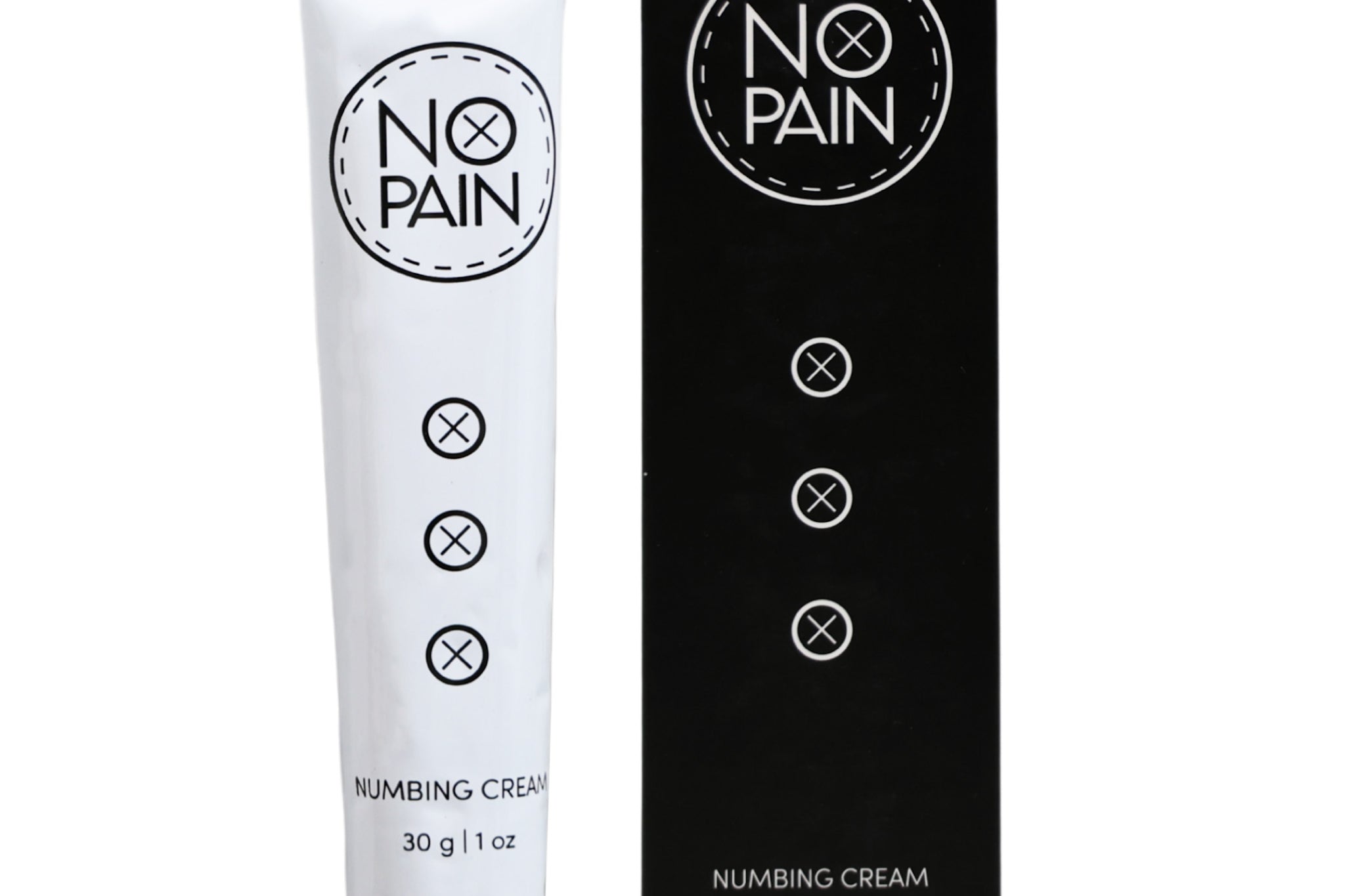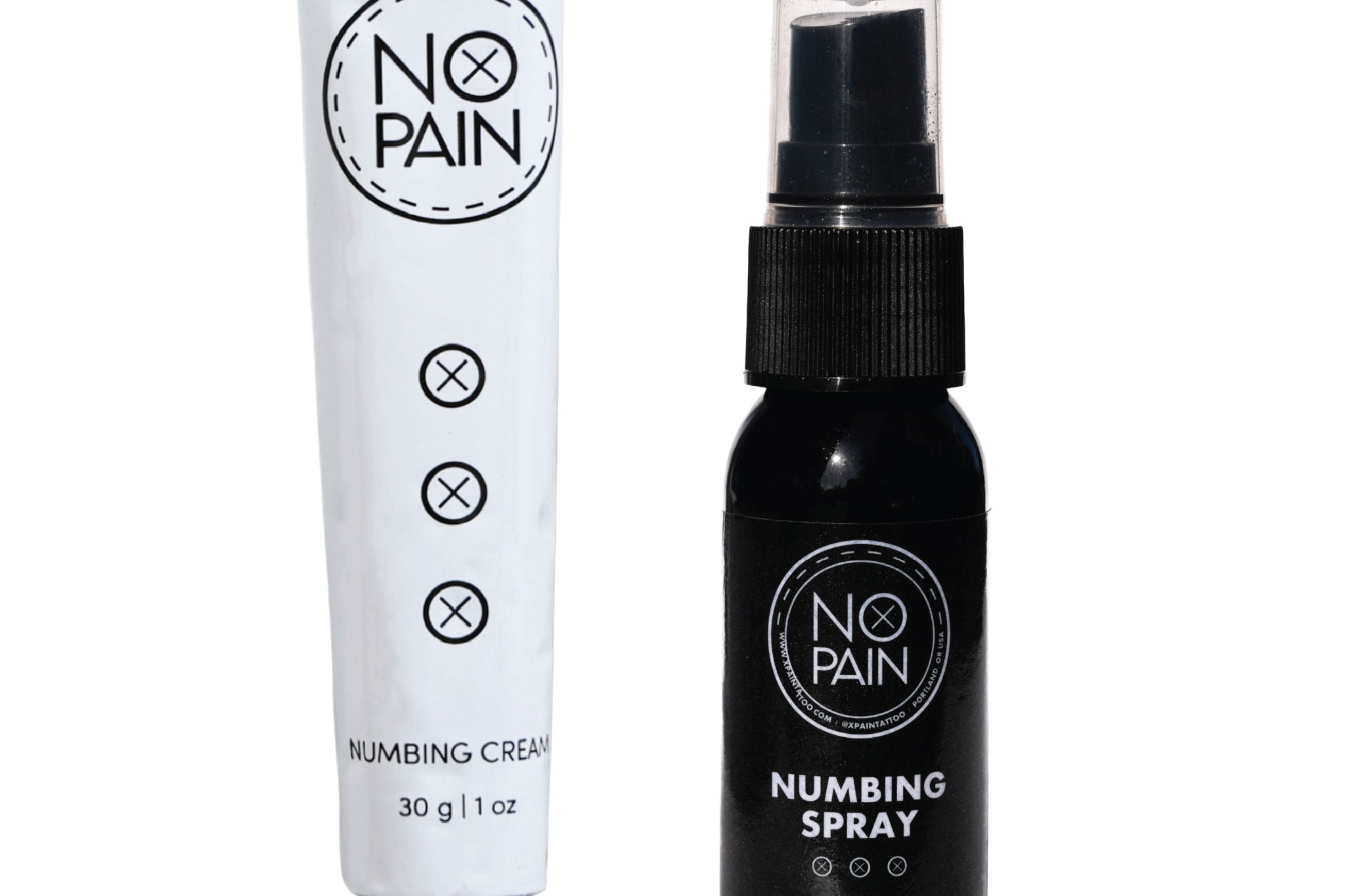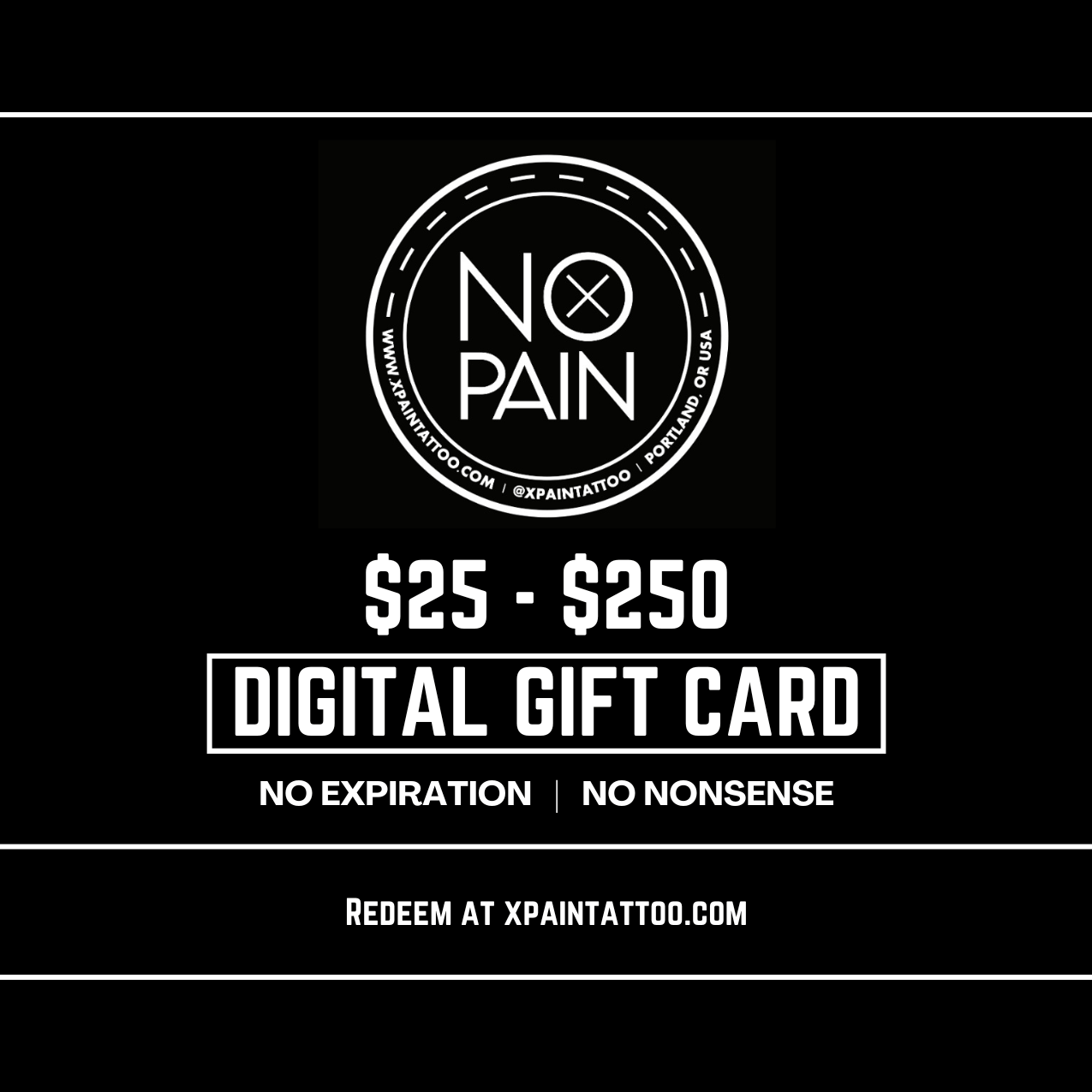Is It Normal for a New Tattoo to Be Raised? A Guide to Bumps and Texture
You're a few days into healing your new tattoo, and as you run your clean hand over it during your aftercare routine, you notice something: the lines and shaded areas feel raised, almost like a thin, embossed pattern on your skin. Is this normal? Is it supposed to feel bumpy?
Relax—this is a completely normal and expected part of the healing process. In fact, it would be unusual if your new tattoo wasn't a little raised for the first few weeks. But what about a tattoo that's years old and suddenly feels raised? That can be a different story.
This is your guide to understanding why your tattoo is raised, differentiating between the normal healing phase and other common causes.
How Tattoos Live Inside Your Skin
So, how does a tattoo actually settle into your skin? Think of the process as a delicate dance between art and biology. When you get inked, the tattoo machine uses fine needles to rapidly insert pigment just below the surface—specifically, into your dermis. This layer is deep enough to hold the design in place, but not so deep as to blur the lines or cause excessive trauma.
Your immune system then recognizes the tattoo pigment as something foreign. Instead of rejecting it outright, your body forms a kind of protective barrier around the pigment particles, locking them in. That's why tattoos remain crisp and vibrant for years, even as your skin replenishes itself.
This careful placement and the body's natural response explain both why your new tattoo might feel slightly raised at first, and why your favorite masterpieces can last a lifetime.
The Healing Phase: Why Your New Tattoo is Raised
The primary reason a fresh tattoo feels raised is inflammation.
A new tattoo is an open wound. Your body, in its wisdom, immediately launches a healing response. It sends an increased flow of blood and restorative plasma to the area to begin repairing the traumatized skin. This natural process causes the skin to swell slightly. What you are feeling is your body's powerful healing mechanism at work.
But the healing journey isn’t just a single event—it unfolds in a series of phases, each with its own quirks and textures:
-
Leaky Phase: Right after getting inked, your tattoo may ooze plasma, ink, and a bit of blood. This is your skin’s way of flushing out excess ink and beginning repair.
-
Peeling Phase: As the healing progresses into the second week, you’ll notice the skin starting to flake and peel, often alongside light, flaky scabs. The tattoo may still feel raised thanks to these regenerating layers.
-
Itching Phase: The dreaded itch arrives as nerves wake up and the skin renews itself. Resist scratching—this means your body is doing its job.
-
Final Healing: Eventually, as your body completes its healing process, the texture of your tattoo smooths out. The raised feeling fades as the final layers of skin settle down.
Timeline: You can expect your new tattoo to be noticeably raised for the first 2 to 3 weeks. As the final layers of skin heal and the ink fully settles into the dermis, the texture will gradually become smoother and flatter. A fully healed tattoo should eventually feel just like the rest of your skin.
The Role of the Protective Wrap: What It Does and How Long to Leave It On
Let’s talk about that clear, clingy wrap your tattoo artist carefully applies before you leave the studio. While it may not win any fashion awards, it serves a crucial function for your new artwork. Immediately after getting tattooed, your skin starts leaking plasma, ink, and a bit of blood—a messy but totally normal response. The protective wrap keeps these fluids contained, preventing them from drying out and scabbing too early.
Beyond aesthetics, the wrap acts as a barrier against bacteria, dust, and curious (or not-so-curious) pets, dramatically reducing your chances of infection during those critical early hours. It also maintains a moist environment, which can accelerate healing and keep the new tattoo from sticking to your clothes or sheets.
Most artists recommend leaving the initial wrap on for about 24 hours, though some may suggest shorter or slightly longer periods depending on the type of wrap used and your skin’s response. After that, you can transition to your regular aftercare routine: gentle washing, patting dry, and applying your chosen moisturizer.
Here is what a veteran tattooer of over 20 years says about how long to leave initial wrap on:
"I generally say overnight because I feel like if you allow yourself to sleep in the bandage you prevent your new tattoo from sticking to sheets or adhering to something that you're sleeping in like a T shirt, and you end up getting a much better heel out of it. You’re tattoo getting 12 hours or potentially more to be able to weep out excess fluids. And by the time you take the bandage off and wash it in the morning, then it's it's pretty much done doing what it needs to do."— Craig Brown, @craigbrowntattoo, owner of @historictattoo
Why Following Your Artist’s Aftercare Instructions Matters
So, what’s the deal with all those aftercare rules your tattoo artist hands you? Well, they’re not just there to make you feel like you’re cramming for a skin-care exam. Each step in that instruction sheet is designed to help you sidestep the major pitfalls that can turn your new masterpiece into a source of regret.
-
Defensive Strategy Against Infection: Tattoo artists don’t just know how to wield a machine—they’re schooled in the fine art of keeping germs at bay. Following their advice helps protect your healing skin from bacteria that can sneak in and spark infections. Even the most epic ink job can be derailed if nasty bugs get involved.
-
Preserving That Fresh Ink: It’s not just about health—aftercare is key to holding onto those sharp lines and vivid colors. Ignoring your artist’s guidance can mean premature fading, patchy spots, or even scarring. No one wants a tattoo that looks like a faded treasure map.
-
Knowing When to Worry: Sometimes, things go sideways—your tattoo stays red, feels extra puffy, or just doesn’t seem right. This is exactly when you should check in with your artist. They’ve seen it all and can tell the difference between normal healing and a red flag situation.
Bottom line: Your artist’s aftercare instructions are like a cheat code for a smooth, beautiful heal. Treat them like gold, and you’ll be showing off your fresh ink with pride—no “ouch” moments required.
How to Manage a Raised Tattoo
While a raised texture is normal during healing, the goal is to calm the inflammation and promote a smooth, flat heal as efficiently as possible.
Clean Gently
First, always keep the area clean with a gentle wash like our No Pain Tattoo Cleansing Foam to prevent any infection, which would cause severe inflammation. When washing your tattoo, use only mild, unscented, and antibacterial soap—avoid fragranced soaps or body washes, as their added scents can irritate fresh ink. The main goal is to remove bacteria and keep the healing skin safe, so stick to products specifically formulated for sensitive or tattooed skin. Always pat dry with a clean towel; rubbing can damage the delicate area.
Soothe the Swelling
This is where our No Pain Tattoo Soothing Gel is a lifesaver. Its cooling formula is specifically designed to help calm the skin's inflammatory response. Applying the Soothing Gel during the first few days can actively help reduce that initial puffiness and redness, making the tattoo feel more comfortable and promoting a smoother heal.
Moisturize Properly
After the initial swelling has subsided, switch to our No Pain Tattoo Aftercare Balm to keep the peeling skin hydrated, which also helps the texture normalize faster. Moisturizing is your secret weapon here: it creates a protective barrier, keeps dryness at bay, and gives your skin the nourishment it desperately needs to repair itself.
Be generous—apply a liberal amount and gently massage it into your tattoo and the surrounding area. Stick with fragrance-free and color-free formulas; anything else can irritate your healing skin and set you back. Think of your moisturizer as armor for your tattoo, helping lock in that fresh ink and supporting smoother, more comfortable healing.
Taking great care of your tattoo is the real secret to helping your skin return to normal. Following your artist’s aftercare advice and sticking to a solid routine can help prevent extra irritation—the kind that can make your tattoo look swollen, raised, or even compromise how it ultimately heals. If you’re ever unsure, don’t hesitate to reach out to your artist for guidance; they’ve seen it all and are there to help you through the process.
Pro Tip: Dry it Thoroughly Before Re-Covering
Before reapplying any protective covering to your tattoo, it's essential to ensure the area is completely dry. Why? Any leftover moisture—whether from washing or sweat—can get trapped under the bandage or film, turning your fresh tattoo into a miniature greenhouse. This damp environment can encourage the growth of bacteria, greatly increasing the risk of infection and unnecessary irritation. To avoid this, gently pat your tattoo dry with a clean, soft towel or let it air dry for a few minutes before you cover it up again. The goal is a clean, dry surface that supports optimal healing and keeps those unwelcome germs at bay.
Consistent aftercare not only helps your tattoo heal beautifully, but also minimizes the chances of any raised or irritated areas sticking around longer than necessary. A little diligence now pays off with vibrant, smooth ink for years to come.
Why You Should Never Scratch, Peel, or Pick at a Healing Tattoo
As your tattoo heals, you’ll probably notice some serious itching and peeling—think sunburn, but maybe with a little extra personality. As tempting as it is to go to town scratching or picking at those flaky bits, fight the urge! Here’s why:
-
Risk of Infection: Scratching can create tiny breaks in your healing skin, basically rolling out the welcome mat for bacteria (yes, even if your hands seem clean).
-
Pigment Loss: Picking at scabs or peeling skin can pull pigment right out of your tattoo, leading to patchy spots or faded colors. Not exactly the look you were going for!
-
Prolonged Healing: Every time you disrupt that fresh skin, you set your healing back a notch—think of it as hitting “undo” on your body’s progress.
The best game plan? Let your skin do its thing. That flaky layer will shed naturally, revealing your vibrant new tattoo underneath. Patience really does pay off here.
The Aftermath: Why a Healed Tattoo Can Get Raised
Sometimes, a tattoo that has been healed for months or even years can suddenly feel raised and itchy. This is also surprisingly common and is usually not a cause for panic.
-
The Most Common Cause: Histamine Reactions. Your body can sometimes have a minor, localized allergic reaction to the pigments in your skin. This isn't a sign that the ink is bad, but rather that your immune system is reacting to something else. Common triggers include seasonal allergies, changes in temperature, a bug bite nearby, or even just stress. This type of reaction is usually harmless and goes down on its own within a few hours or a day.
-
Skin Conditions: Underlying skin conditions like eczema or dermatitis can flare up on tattooed skin, causing the design to become raised and irritated.
-
Scar Tissue: In some cases, if the skin was overworked during the tattoo session, the body can create a bit of excess scar tissue (called hypertrophic scarring) during the heal. This can leave parts of the tattoo permanently raised to the touch.
When to Worry: Raised Tattoos vs. Tattoo Scarring
A healed tattoo should look similar to a painting on your skin—smooth and flat, blending in with the rest of your body. Scarring and distortion aren’t normal parts of the tattoo healing process, and they can be a sign that something went a bit off during the initial healing or application:
-
Hypertrophic Scarring: This is when the body produces too much collagen, creating a raised, sometimes shiny area over the tattoo. It might stay within the original lines of your design or become more noticeable with time.
-
Keloid Scarring: Less common but more dramatic, keloids are thick, raised, and can extend well outside the design itself. People prone to keloids should be extra cautious when getting tattooed.
-
Distorted or Blurry Lines: Excessive scarring or improper aftercare can sometimes cause the lines of your tattoo to blur or distort, making the art look less crisp.
If your tattoo is severely raised, red, or distorted—or if you notice pain, pus, or persistent swelling—these could be signs of infection or significant scarring. In these cases, it's best to consult with a dermatologist or your tattoo artist for guidance.
When to Take Action
A normally raised healing tattoo might be a bit sore, but the swelling and redness should decrease over time. If the raised areas are accompanied by worsening pain, a foul odor, colored pus, or red streaks spreading from the area, it could be a sign of an infection. In this case, see a doctor immediately.
The Verdict: Is it normal for a tattoo to be raised? Yes. For a new tattoo, it's a standard sign of healing. For an old tattoo, it's usually just a temporary skin reaction. The key is to monitor it. A healing tattoo should always be getting progressively better, not worse. By understanding your body's healing process and supporting it with a high-quality aftercare routine, you can ensure that initial raised texture settles into the smooth, beautiful piece of art you've been waiting for.




